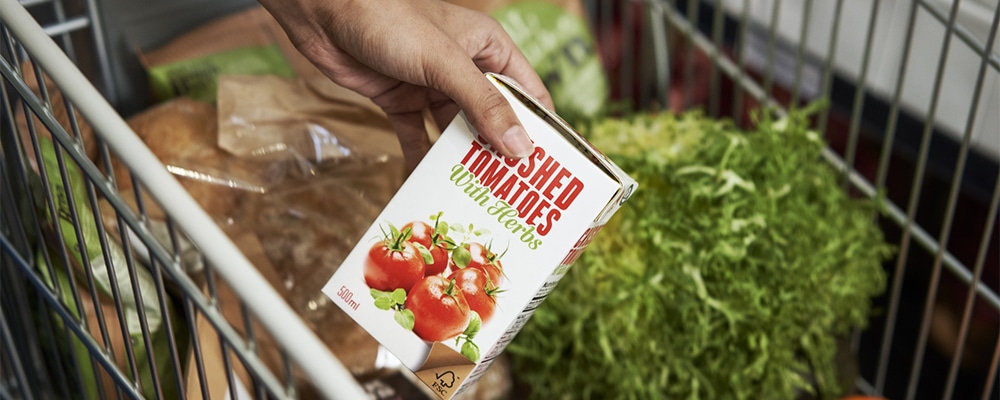Digitising the F&B industry is one way to increase efficiency and ensure a high-quality product output.
E-commerce is increasingly the go-to shopping method for consumers, and it is no different when it comes to grocery shopping. According to Nielsen, Australia saw a 22.9% increase in new grocery online shoppers over 12 months.
Online grocery provides a significant opportunity for food and beverage (F&B) manufacturers and retailers. But to keep up with consumers’ high expectations of online shopping, F&B companies need to understand the trends shaping them.
Recent research conducted by Tetra Pak into consumer trends reveals that convenience and time continue to have a big impact on consumer behaviour. Consumers want their shopping choices to be quick, easy, and convenient. The Amazon Dash Button is a great example of this. It’s a small device which consumers place in their home and set up to a mobile app to link the device to a particular product, such as soap. When a consumer runs out of soap, they have to push the button, and it automatically orders more through Amazon, removing the hassle and time of repurchasing in store or online.
Consumers also want assurance that the brands they purchase are doing the right thing by the environment and the community. As online grocery increases, this can also mean a growth in carbon emissions due to the higher number of deliveries. As a result, consumers will be looking towards F&B companies to reduce their overall carbon footprint and environmental impact in other ways along the supply chain.
One way to achieve this is by using packaging formats that are lightweight and space efficient, like cartons. Using cartons to store food and beverage products allows for more items to be transported in each delivery, cutting down the total deliveries required. Integrating renewable materials into packaging is also key. Renewable materials are those that are natural and can be replenished over time, such as wood. Using materials that are responsibly sourced and come from FSC-certified and controlled sources ensures that these natural resources will be abundant in the future.
While these are the trends continuing to make an impact, the future of F&B packaging is undoubtedly digital. In the new era, we will take a step towards achieving a truly intelligent package. No longer is it only about protection, functionality, and sustainability. It is about connectivity. Using code generation, digital printing, and data management, these new digital platforms will benefit food producers as well as retailers and consumers.
With technologies like augmented reality, packaging can become a more engaging and interactive touchpoint with consumers. Connected or smart packaging that uses digital identifiers like QR codes creates new value in end-to-end traceability. The codes provide consumers with detailed information about a product, including its carbon footprint, the materials in the packaging right down to where the food was produced. For retailers, this traceability provides an opportunity to accurately track stock movement to meet demand, while also improving product quality on the shelf for consumers.
The benefits of digitisation will also extend across the supply chain. Ensuring a production line is running at an optimal rate is key to delivering high quality products promptly. Using technologies like Artificial Intelligence (AI) and Internet of Things (IoT), predictive maintenance monitors patterns of operation so technology can predict if a fault or stoppage of machinery is likely to occur, allowing for these issues to be fixed in advance. This saves businesses both time and money and ensures a smooth supply chain operation.
The future of the food industry is undoubtedly digital. Digital technologies will enable food and beverage manufacturers and retailers to tackle many of the challenges they face today such as improving transparency and tracking each product individually, improving quality control to reduce the risk of food safety issues, connecting to consumers in new ways and reducing food waste.
Written by Andrew Pooch [Tetra Pak Oceania]
This article can be found in Issue #66 of our magazine, The Retailer. To read more articles like this visit: https://www.retail.org.au/retailer/





















